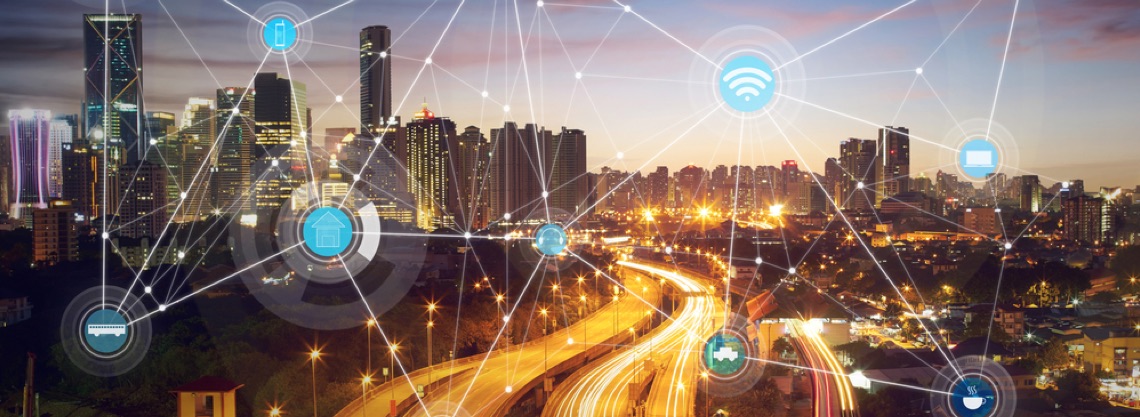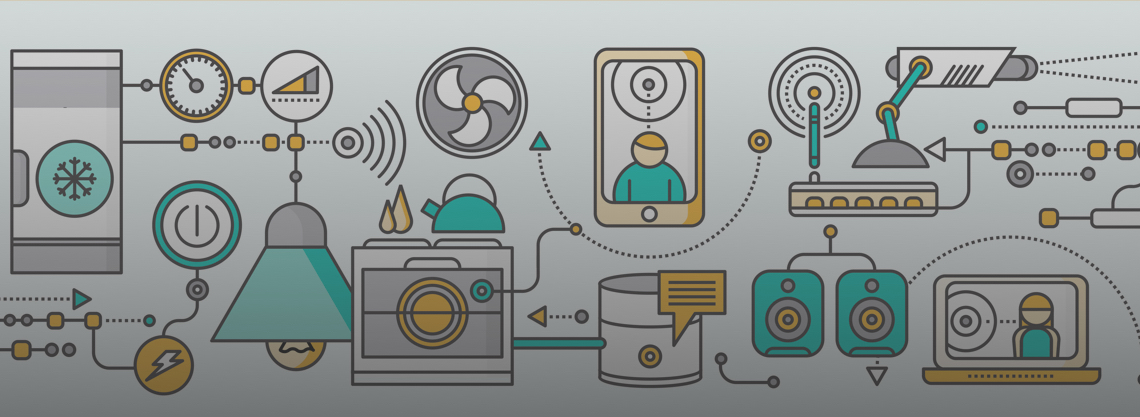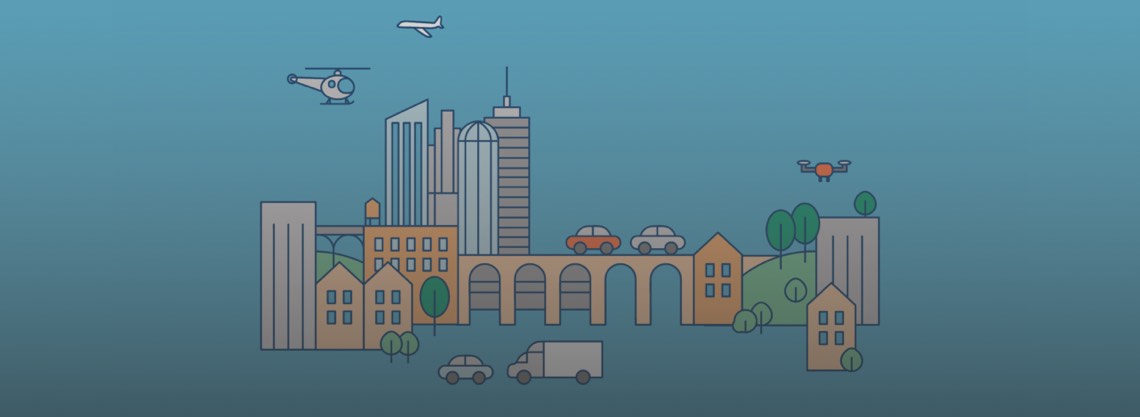The Internet of Things Future is Coming: 7 IoT Trends for 2022
articlesartificial intelligenceblockchaininternet of thingsThe Internet-of-Things technology is constantly evolving, and therefore IoT trends are something that always needs to be looked out for and kept pace with. We’ve already touched on the subject of the Internet of Things in our previous blog posts. We tried to clarify the notion of IoT, as computers’ own means of collecting information, identifying and understanding the world. Also, we considered the most remarkable IoT examples. In this blog post, we’ve compiled seven prominent IoT trends 2019 has brought and predicted the emerging trends in IoT that we should expect in 2020.
Future of IIoT across the industries
The evolution of the IoT has already been around for a while. After the introduction of new metrics for a post-ISA era, Internet-of-Things technologies are successfully re-engineering businesses and modifying optimal ways of running them. These technologies affect nearly all the existing industries: healthcare, insurance, smart buildings, manufacturing, transportation & logistics, retailing, and more.
What changes need to be incorporated depends by far on what devices you are focusing on, what size your target market is, and, most importantly, what industry you operate in. Even though some general IoT current trends are quite visible across all the industries, the industry-specific predictions should not be overlooked. Be it the 2020 industrial IoT trends like the ones peculiar to manufacturing, or those that are attributed to the healthcare or transportation industries.
IoT trends in healthcare
The Internet of Things is very well fit for the needs of the healthcare industry. The most in-demand areas of IoT technology adoption are:
- Remote patient monitoring with the help of wearable devices whose built-in sensors track patients’ conditions.
- Optimization of day-to-day operations in a hospital through medical equipment management and customer service facilitation.
- Disease prevention and monitoring, which is enabled by mobile apps paired with IoT-based devices.
IoT trends in manufacturing
Heavy industries like manufacturing are concerned with complex systems and processes management within factories and outside them. Industrial Internet of Things platforms can not only uncover workflow inefficiencies but also reduce them. These are the key improvements that IIoT platforms for manufacturing introduce:
- Production maintenance
- Inventory management
- Industrial big data analytics
IoT trends in transportation
The rate of IoT adoption in the transportation & logistics industry is already high and keeps accelerating. Investing in new technologies, transportation companies lower the cost of shipping or transporting and increase their operational efficiency. The latest trends in IoT transforming the way people and goods are transported are:
- Predictive diagnostics and vehicle maintenance based on automotive IoT
- Complete transportation telematics with vehicle-to-vehicle (V2V) communication
- Real-time cargo monitoring
One way or another, these industry-specific Internet of Things future trends are the particular instances of the universal trends in IoT applications that we are going to address below. Recently, Gartner has highlighted the top 10 IoT trends to explore in 2020. These trends are:
- Hyperautomation
- Multiexperience
- Democratization of Expertise
- Human Augmentation
- Transparency and Traceability
- The Empowered Edge
- Distributed Cloud
- Autonomous Things
- Practical Blockchain
- AI Security
Relying on this list, we’d like to discuss in a bit more detail the IoT trends for Human Augmentation, the rise of security concerns, practical blockchain, Artificial Intelligence, the increase in enterprises’ spending on IoT, 5G networks, and the empowered edge.
1. The power of connectivity and IoT’s growth
The most significant IoT trend for 2020 is that IoT networks of connected devices that people are interacting with are going to extend, and the amount of data that one can gather from these networks will increase, too. We have deliberately adopted a new lifestyle of being connected all the time. This is evidently impossible to ignore, and the IoT industry is meeting us halfway.
Gartner has labeled this trend as “Human Augmentation.” Not only the human connection but also universally connected devices are a factor that can make a difference in our everyday experiences. The co-mingling of these two matters is thus generating a connected smart world.
The driver of IoT networks improvement in the industries fostering sensor-based technologies is data. The more data an organization or business gets from users’ connected devices, the more likely they are to deliver personalized experiences to their customers, satisfy their needs, and predict their behaviors.
The need for information thus creates a foundation of consumer IoT trends. Internet-of-Things applications are now being tested within an increasing number of verticals. By doing so, organizations are aiming to enhance the user experience and improve the quality of the delivered services. Likewise, connectivity technologies are being developed in excess, and every business may take advantage of those which best satisfy the requirements for functionality.
As a result, the more connected devices there are, the more consumer data is being collected. This makes entrepreneurs responsible for creating and getting compliant with security policies.
2. IoT security trends: raising security concerns on the table
A tangle of connections is bound to unwrap some network security challenges in the Internet of things future. Some connectivity solutions like Wi-Fi are not reliable enough. Besides, networks running these devices are highly vulnerable due to their fragmented nature. This issue is getting ever more pressing in 2019 and thus introduces another Internet of Things trend that needs addressing.
In the first place, such regulations as the GDPR can contribute to fixing security flaws in IoT devices and compel single users or organizations (e.g., health, education, and governmental facilities or businesses) to keep track of all the devices to respond to security breaches effectively. In the second place, such things as mobile device management systems and network access control systems are likely to grow in popularity as a means of mitigating data breach risks. In particular, they let users monitor the number of devices connected to their network, who their owners are, what data is leaving the system, etc.

3. Blockchain technologies shaping the future of IoT
Blockchain is one of the key IoT technology trends as for today. The exchange of money and data between IoT devices in a reliable way is becoming possible once the blockchain technology provides them with a simple infrastructure for doing so. Put together, the two phenomena — IoT and blockchain — are living up to their hype. The fragmented nature of IoT matches the decentralized nature of blockchain. The latter affords anonymity and security to multiple networks and their owners, while the digital signatures and private keys following each transaction guarantee that the IoT environment will be safe.
IoT devices are designed to make the life of a person or an operating unit easier. This requires the constant generation of personal data and implies more considerable risks of hacker attacks. Besides, the amount of data is expected to expand exponentially, in the same manner as the number of machine-to-machine interactions. Consequently, the distributed nature of blockchain will make tons of data available at any time when it is needed and with the minimum security risks.
4. Advanced management and artificial intelligence
The list of emerging trends in IoT would be incomplete without mentioning Artificial Intelligence. In the most complex instances, the combinations of the Internet of Things, blockchain, and artificial intelligence occur (the IBM case.) The increase in data is indeed one of the strongest triggers of changes that underlie most of the IoT industry trends.
Essentially, IoT is all about collecting as much data as possible to let people take reasonable actions based on the analyzed information. Relying on the AI support to the IoT efforts along with the shift to advanced data analytics, one can make the most reliable predictions. They both can contribute to wiser data management with the help of intelligent automation. With the ML algorithms, processes can be automated, which increases the accuracy and helps to make more sense of the gathered data. This connection between the AI and the IoT can also be presented metaphorically. Then, Artificial Intelligence is a brain that makes smart decisions and enables a body (IoT) to take action. Under such circumstances, one is hardly possible without the other.
5. The boost in business spending on IoT
All the above trends in the Internet of Things will eventually make businesses increase their expenditures on IoT projects. The Internet of Things trends are inducing capitalists to believe that their money must be poured into sensor-based technologies. IoT is promising to make the customer experience better in about any existing industry (and even in entirely new ones.)
IDC reports that on the global market, the Industrial IoT (manufacturing, utilities, and transportation) spendings are going to surpass the ones of the Consumer IoT. Likewise, the largest spending category — IoT hardware — will make way for IoT software and services in the near future. Meanwhile, the fastest-growing industries will be the consumer sector (smart homes), healthcare (remote health), and retailing (digital signage.) Though the general picture is not limited to these examples, the upward trend is likely to continue.
6. 5G networks across the industries
5G networks in 2020 will continue to be deployed across different industries around the globe. This, in turn, will be a contributing factor driving an increase in the number of IoT devices. 5G, as well as, Internet of things, are considered the beacons of the fourth industrial revolution that is still ongoing in 2020. Now, it’s time they got coupled to drive tech transformation.
The fifth generation of mobile technologies provides faster and far more reliable connectivity, which encourages industries to transform the manufacturing and business processes accordingly. Together, IoT and 5G are establishing an infrastructure for smartphones and tablets, as well as wearables, medical devices, and vehicles. There will be more devices connected to the Internet. This evolvement of a 5G-powered IoT system will fuel the development of the smart city and connected vehicle networks, improve healthcare operational efficiency, and benefit the manufacturing industry. An entire ecosystem of fully connected intelligent sensors and devices is expected to take shape in the near future.
7. Empowered edge computing in IoT
Edge computing is definitely one of the key industrial IoT trends in 2020. Earlier, we wrote an article explaining how IoT systems made use of edge computing. In 2020, this pair of technologies is moving to the forefront.
Edge nodes and gateways, connected to IoT devices and systems, help them reach various types of data centers. IoT data often has to travel long distances from the data center to the device. Yet, empowered by the edge computing technology, it will less likely experience low bandwidth or increases in latency. That’s why the number of enterprises investing in the edge technology keeps growing — this way, the accuracy and quality of real-time insights are expected to go sky-high.
Conclusion
IoT is not implemented in one go. It is an incremental process that gives an incentive to nearly universal digital transformations. IoT trends 2020 promises to put a spotlight on in both consumer and industrial fields prove that the future has already begun and the technology will keep changing our lives. You are inevitably going to face some challenges. Thus, to successfully adjust business processes to the new capabilities, you should get an in-depth understanding of the IoT latest trends and the hurdles they may entail first. Then, it will be easier for you to address those difficulties, extracting and maximizing value from this knowledge.

© 2018, Vilmate LLC
[Updated Jan 23, 2020]




